If you’re planning a trip to Laos in 2025, you’re in for more than just serene landscapes and time-frozen temples.
While the country’s classic charms, like golden stupas and Mekong river life, remain as enchanting as ever, Laos has recently introduced new cultural experiences that allow travellers to engage more authentically and ethically with its Buddhist traditions.
Whether you’re a first-timer or returning to uncover more, here are the most meaningful and memorable things to do in Laos right now.
Also read: Experience Authentic History: The Best Places to Visit in Southeast Asia for Cultural Travellers
Cultural experiences
Luang Prabang
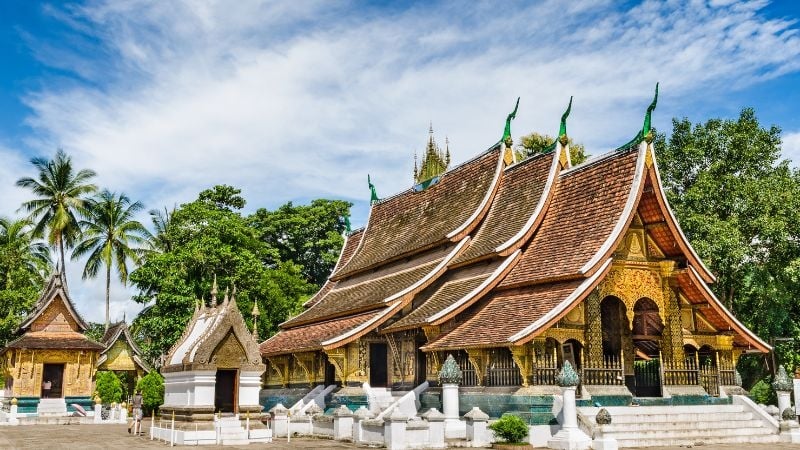
Image credit: Wuttichok Panichiwarapun via Canva Pro
Luang Prabang, a UNESCO World Heritage Site, is one of the most culturally rich towns in Southeast Asia.
Its charm lies in golden-roofed temples, faded French villas, and the gentle rhythm of the monks’ daily life. Notable landmarks include Wat Xieng Thong, famed for its intricate mosaics, and Mount Phousi, a sacred hill with panoramic views over the town.
Preserving this sacred space
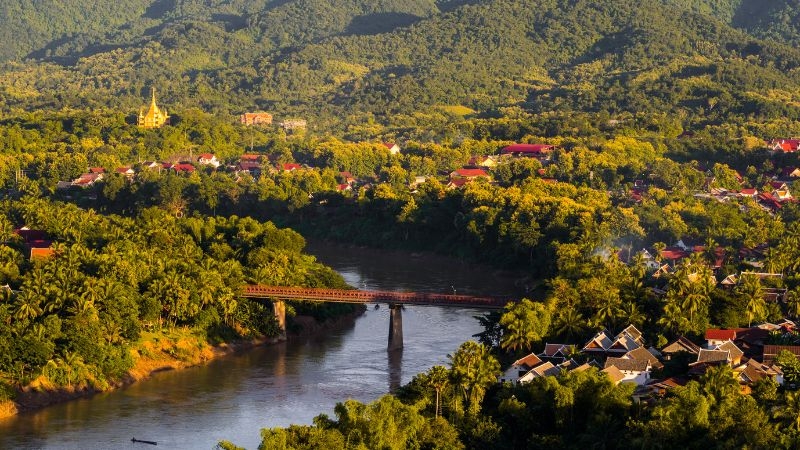
Image credit: holgs via Canva Pro
However, this cultural jewel is coming under pressure from mass tourism. The daily morning alms ceremony (tak bat), once a quiet spiritual exchange where monks walk silently through the streets at dawn to receive offerings of sticky rice and simple food from local residents, has been increasingly disrupted by visitors who treat it as a photo-op.
In temple grounds, tourists have been spotted entering without removing their shoes, not following the dress code, or disrupting religious services. These issues have sparked growing concern among locals and monks.
Despite this, the local monks wish to continue welcoming visitors. Several temples and community groups have responded by introducing new monk-led experiences aimed at fostering genuine understanding rather than passive observation.
Their efforts to face the situation with grace and understanding are inspiring and provide a better way for tourists to experience Lao traditions authentically and ethically.
Join evening chanting and meditation
Temples such as Wat Paphai and Wat Siphoutthabat now offer sessions where visitors can sit quietly with monks during their evening chanting rituals. Tours led personally by former monks educate visitors in detail about these religious and spiritual practices.
Visitors are encouraged to take part respectfully, removing shoes, wearing modest attire, and refraining from intrusive photography.
Understanding Alms Giving, the right way
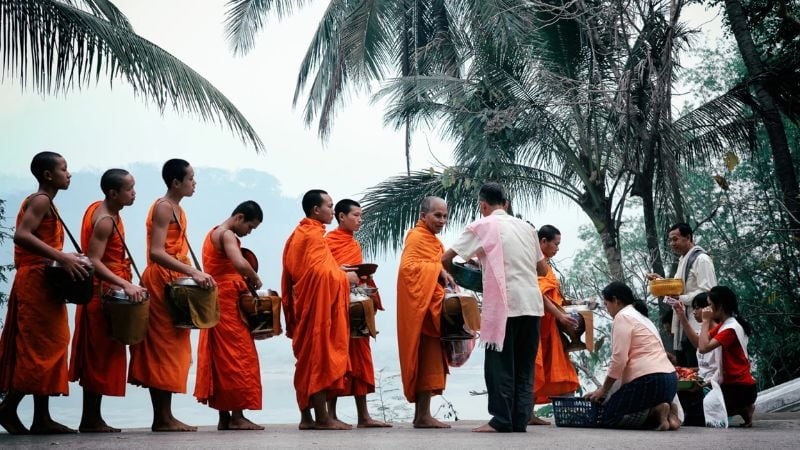
Image credit: Discover Loas Official Website
Local guides offer early morning briefings to explain the cultural context and proper etiquette of the tak bat ceremony. Visitors are encouraged to observe from a respectful distance, buy rice offerings from local markets rather than commercial vendors if they wish to participate, and never obstruct the monks’ path or take flash photos.
Some temples also now provide structured viewing areas or distribute information leaflets in multiple languages to prevent unintentional disruption.
As Laos opens its arms to the world, Luang Prabang stands as a reminder that the most rewarding journeys begin with respect and understanding.
Wat Phu
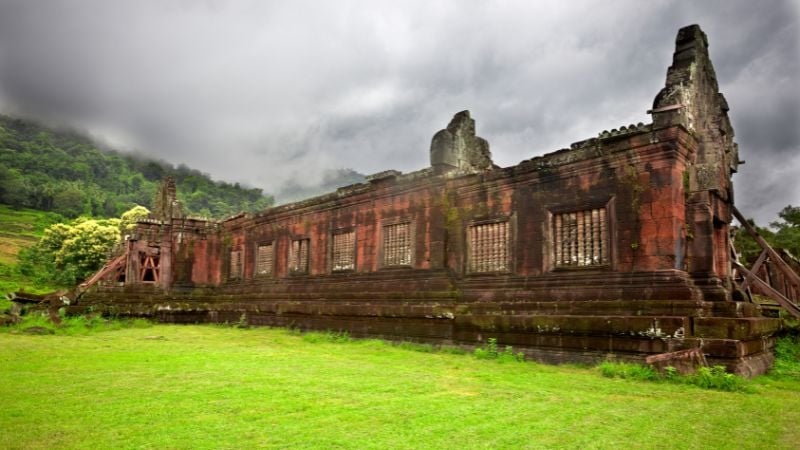
Image credit: nonimatge via Canva Pro
In southern Laos, the UNESCO-listed Wat Phu near Champasak is a lesser-known but striking Khmer temple complex that pre-dates Angkor. Terraced across a mountain base and aligned to the rising sun, its crumbling sanctuaries blend nature, mysticism, and ancient engineering.
You’re unlikely to find crowds here, only moss-covered stones, incense in the air, and locals offering prayers to ancestral spirits. It’s a powerful, off-the-beaten-track destination for history lovers.
Natural and Scenic Wonders
Kuang Si Falls & Tat Kuang Si Bear Rescue Centre
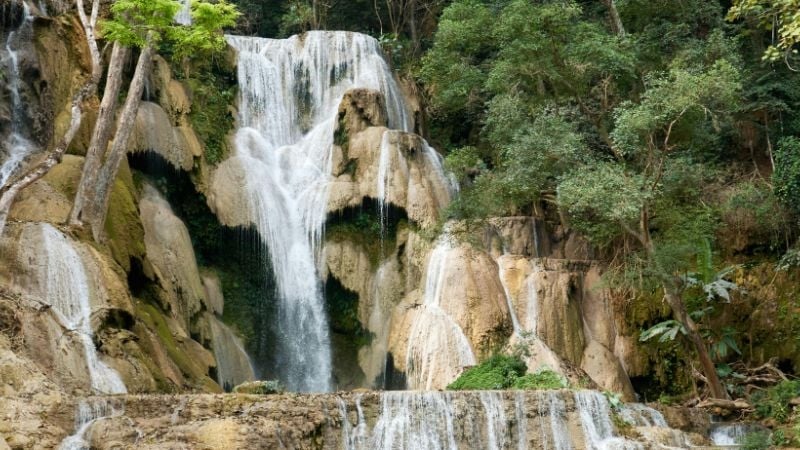
Image credit: Mykhailo Petrushchak via Canva Pro
Just a 45-minute drive from Luang Prabang, the Kuang Si Waterfalls cascade into brilliant blue pools shaded by rainforest. Visitors can hike along wooden walkways, dip into cool lagoons, and photograph the multi-tiered falls framed by jungle foliage.
Next door is the Tat Kuang Si Bear Rescue Centre, where moon bears rescued from the wildlife trade live peacefully in spacious forest enclosures. It’s a worthwhile stop that supports conservation efforts in Laos.
Pak Ou Caves
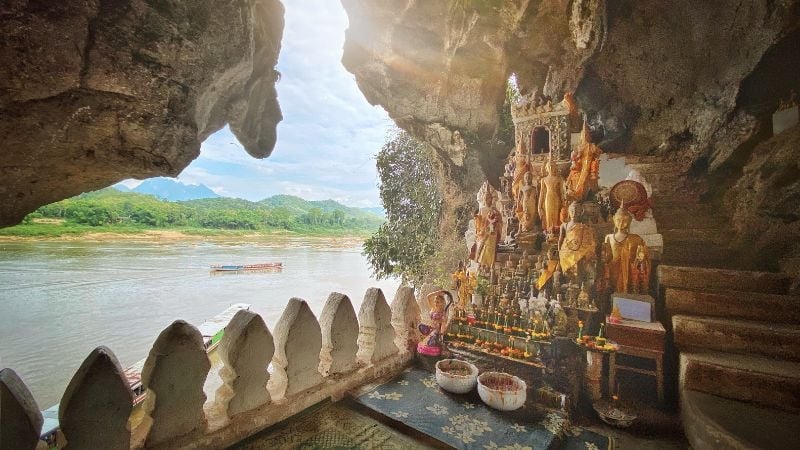
Image credit: Mlenny via Canva Pro
Sail upstream on the Mekong to the Pak Ou Caves, where thousands of Buddha statues have been placed by devotees over centuries. The journey itself is as meaningful as the destination: misty riverbanks, fishermen at work, and jungle-covered cliffs make for a serene ride.
Inside the caves, the atmosphere is cool and meditative, with shafts of light illuminating hundreds of statues quietly watching over the sacred space.
Bolaven Plateau
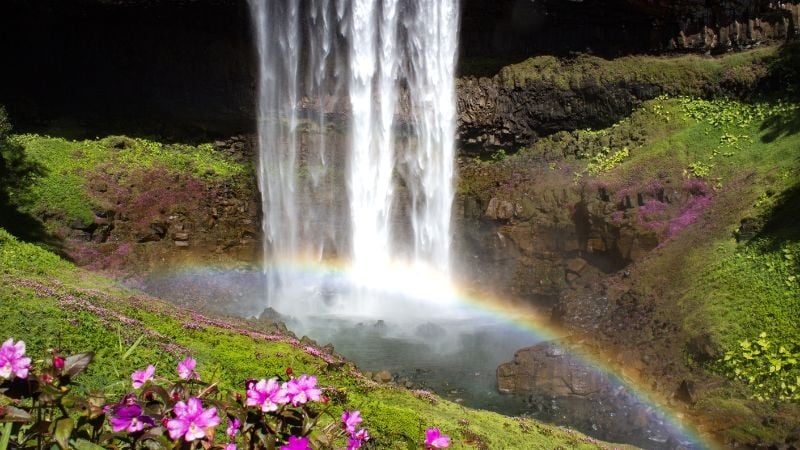
Image credit: Romain Depret via Canva Pro
In southern Laos, the Bolaven Plateau offers a refreshing escape from the heat, with lush valleys, cool breezes, and towering waterfalls like Tad Fane and Tad Yuang.
This region is also the heart of Lao coffee production. Visitors can tour plantations, taste organic brews, and meet farmers from local minority groups such as the Laven and Alak.
Si Phan Don (4,000 Islands)
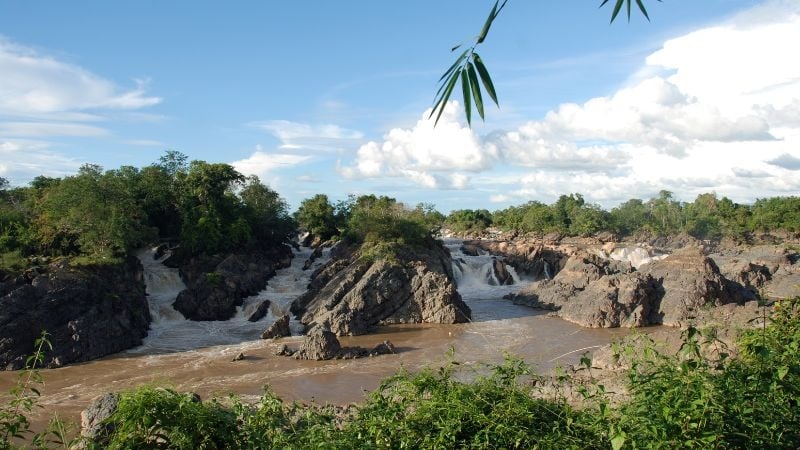
Image credit: Takahisa145 via Canva Pro
In the far south, the Mekong breaks into countless islets at Si Phan Don, where life moves slowly and electricity is optional. Don Khon and Don Det are the most visited, but still feel low-key, with bicycles, hammocks, and sunrise kayaking being the order of the day.
Cruise the river in search of Irrawaddy river dolphins, explore the old French railway bridge, or visit the mighty Khone Phapheng Falls, the largest waterfall by volume in Southeast Asia.
Central city highlights
Vientiane
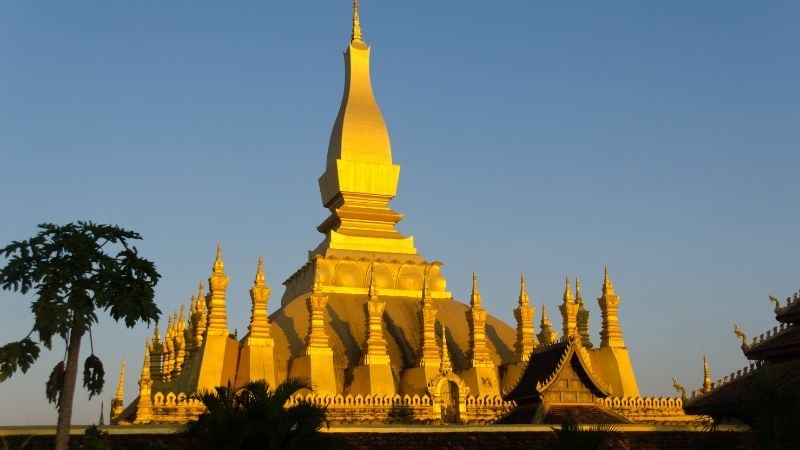
Image credit: noelhtan via Canva Pro
The capital city, Vientiane, offers a calm introduction to Lao urban life. Here, you can cycle past colonial villas, sip strong Lao coffee in riverside cafés, and visit Buddhist landmarks without queues or rush.
Highlights include Pha That Luang, the gold-covered stupa that symbolises Lao identity; Wat Sisaket, known for its thousands of Buddha figurines; and the COPE Visitor Centre, which tells the moving story of UXO (unexploded ordnance), explosive weapons that failed to detonate during past wars and still pose a deadly threat in many parts of Laos.
Pakse and Savannakhet
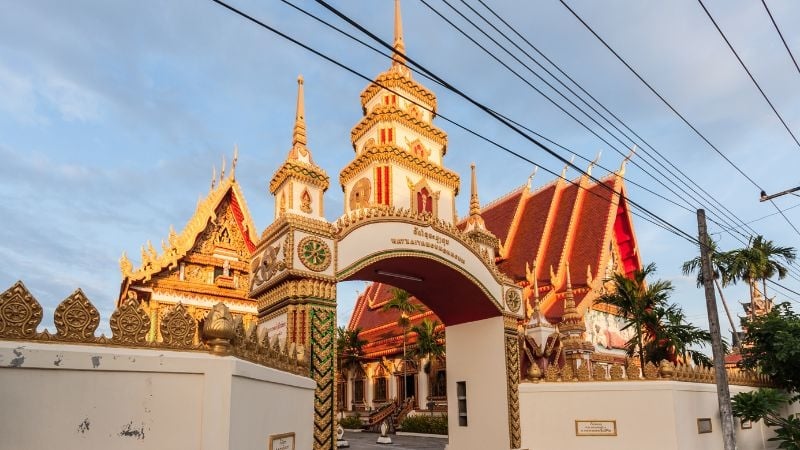
Image credit: AsianDream via Canva Pro
Though often used as transit hubs, towns like Pakse and Savannakhet offer quiet charm. In Pakse, you can stroll along the Mekong, enjoy night markets, and head off towards the Bolaven Plateau or Wat Phu.
Savannakhet, meanwhile, has faded colonial façades, a growing arts scene, and easy access to riverside temples and nearby national parks.
Adventures and Active Escapes
Kong Lor Cave
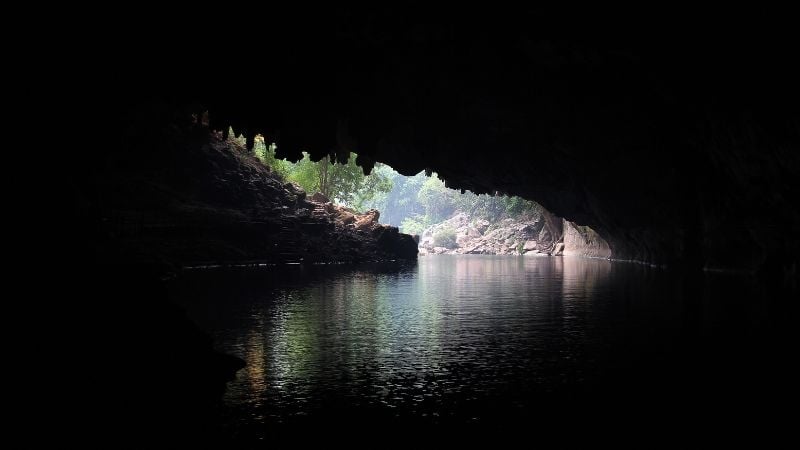
Image credit: evenfh via Canva Pro
In central Laos, the Kong Lor Cave is one of the country’s most dramatic natural wonders, a 7.5km-long limestone tunnel navigable only by boat.
You’ll glide through darkness, illuminated only by torchlight, with rock formations and echoing chambers creating a surreal, cinematic atmosphere.
Also read: You Can Sip Coffee 300 Metres in the Air on a Zipline in Laos
Vang Vieng
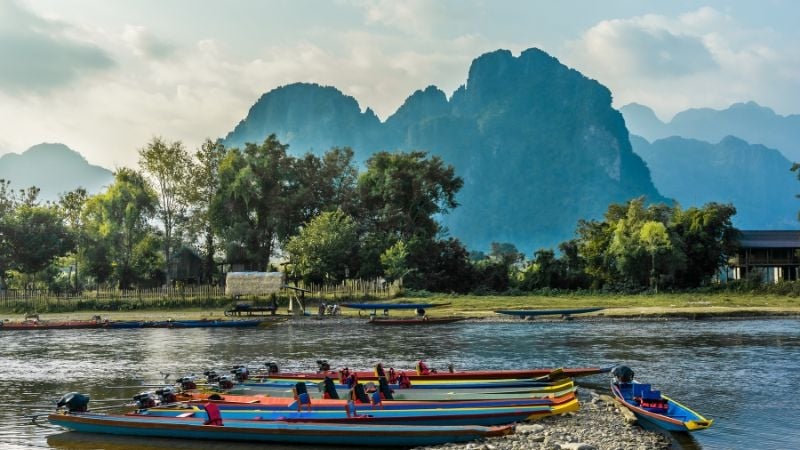
Image credit: davidionut
Once infamous for its chaotic backpacker party scene, Vang Vieng has redefined itself as a centre for soft adventure and eco-tourism. Surrounded by dramatic limestone karst cliffs, lush rice fields, and slow-moving rivers, the town now draws travellers seeking nature and tranquillity rather than nightlife excess.
The journey here is easier than ever, thanks to the new Lao-China high-speed railway, which connects Vientiane to Vang Vieng in under an hour, a vast improvement from the old, winding road journey that could take up to four hours.
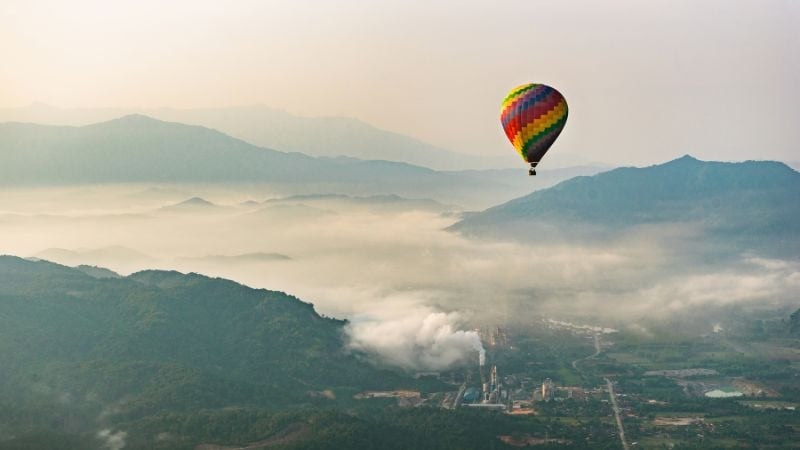
Image credit: AbZoLuteWin via Canva Pro
Once in Vang Vieng, you can kayak or tube safely down the Nam Song River, explore caves like Tham Chang, cycle through the countryside, or take a sunrise hot air balloon ride for sweeping views over misty mountains.
Motorbike the Bolaven Loop
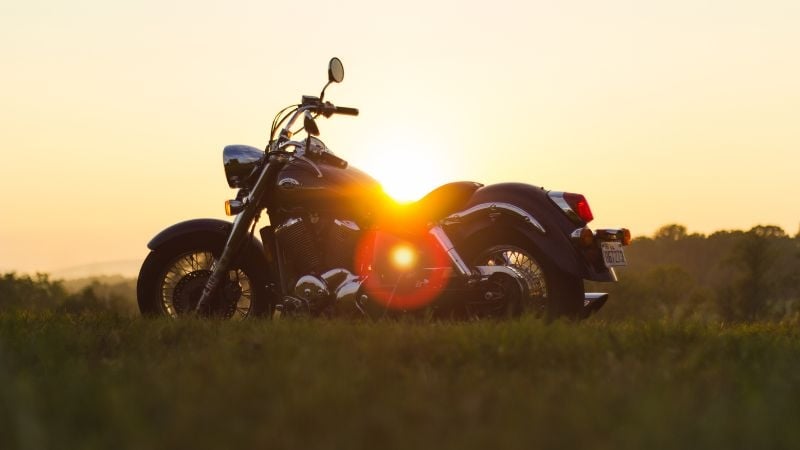
Image credit: Tookapic via Canva Pro
One of the best ways to explore the Bolaven Plateau is by renting a motorbike and following the Bolaven Loop, a scenic route connecting waterfalls, coffee farms, minority villages, and forested backroads.
It’s accessible even to beginners and offers a flexible way to discover southern Laos beyond the guidebook. Homestays and eco-lodges dot the route, allowing for slow, immersive travel.
Also read: 10 Underrated UNESCO World Heritage Sites in Southeast Asia for Singaporean Travellers
Discover Laos differently, and respectfully, in 2025
Laos rewards those who travel slowly and engage sincerely. In 2025, new cultural programmes are making these connections even more accessible, not as tourist products, but as shared moments of humanity. If you’re ready to leave behind the checklist and embrace something more mindful, Laos is waiting.




